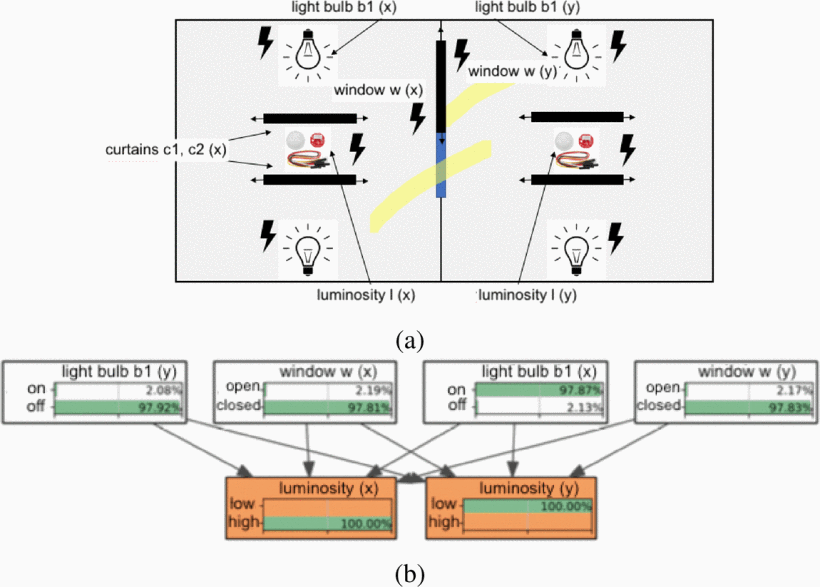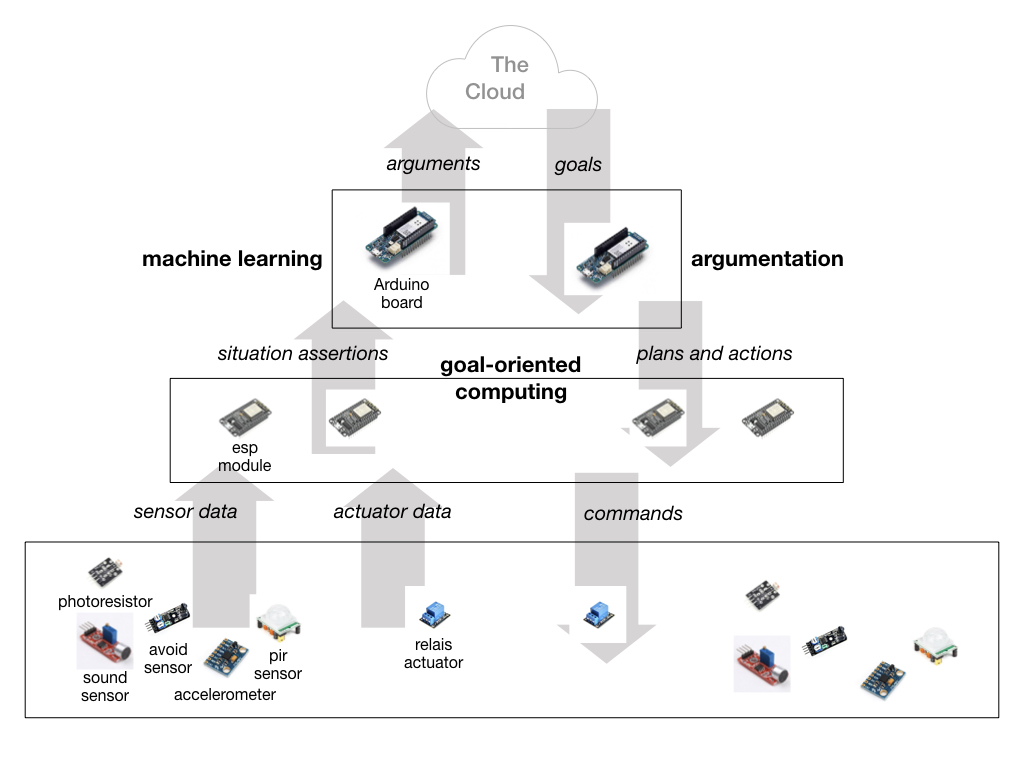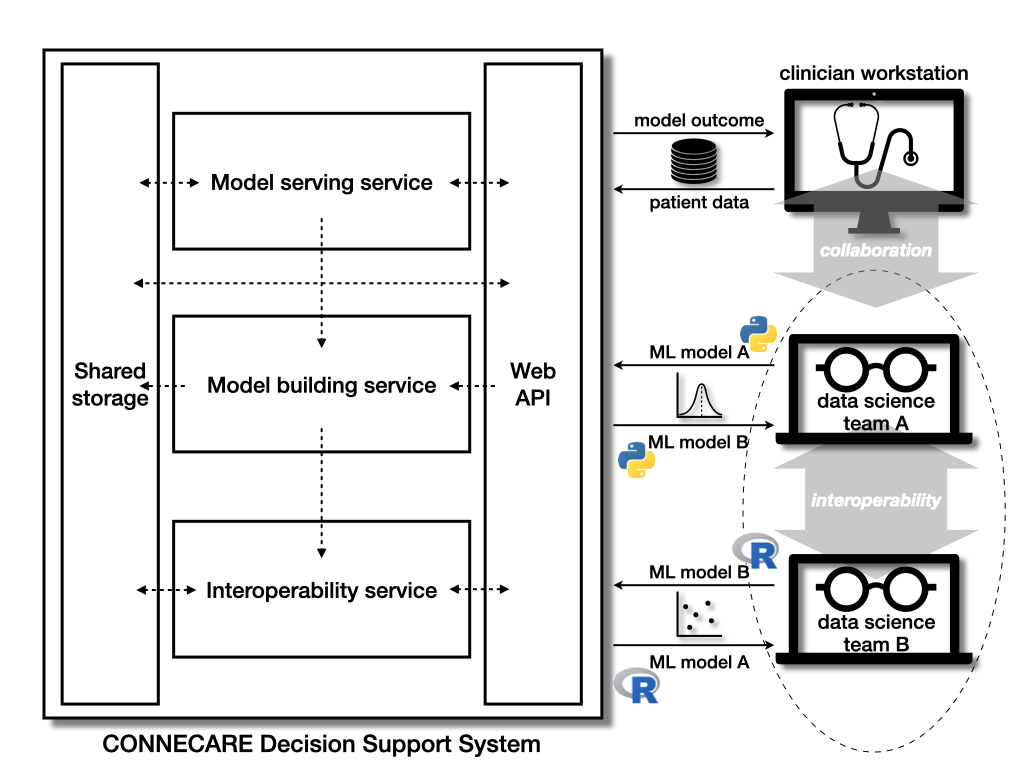Overview
My research activity revolves around two prominent themes: how to best coordinate an ensamble of digital entities towards a systemic goal, and how to provide “intelligent” support to human activities through digital tools.
As such, I’m doing (or did) research activities in the following fields:
- learning to coordinate in multi-agent systems
- argumentation-based coordination
- causal reasoning in multi-agent systems
- self-organising mechanisms and systems
- socio-cognitive models of behaviour and interaction to enhance coordination mechanisms
- logic programming as a form of “Edge intelligence”
- blockchain technologies and smart contracts for distributed and decentralised coordination
- application of the above to pervasive systems such as the Internet of Things
- application of the above to socio-technical systems such as information systems
- decision support systems in healthcare applications for patient empowerment
- decision support systems in healthcare applications for clinical practice
Learning to coordinate

Problem: Agents in multi-agent systems are usually equipped with pre-defined interaction means (e.g. messaging abilities) and fixed coordination protocols to abide to. This cannot cope with highly dynamic scenarios demanding for adaptation.
Solution: Let agents learn how to interact and coordinate at best.
Goal: Improve agents adaptation abilities also along the interaction dimension of computation.
Methods: Transfer (multi-agent) reinforcement and Bayesian learning techniques to the multi-agent domain and across coordination tasks.
Reference publications:
- Developing a “Sense of Agency” in IoT Systems: Preliminary Experiments in a Smart Home Scenario (paywall, ask me a copy)
- Argumentation-Based Coordination in IoT: A Speaking Objects Proof-of-Concept (paywall, ask me a copy)
Coordination in socio-technical systems

Problem: Socio-technical systems1 cannot be coordinated with the same mechanisms and techniques used for purely technical systems.
Solution: Consider socio-cognitive theories of action and interaction while designing such coordination mechanisms and techniques.
Goal: Improve system coordination outcomes, however defined on a functional or non-functional perspective.
Methods: Exploit humans social interactions and cognitive stance to adapt system behaviour.
Reference publications:
- Coordination in Socio-technical Systems: Where are we now? Where do we go next? (paywall, ask me a copy)
- An Argumentation-Based Perspective Over the Social IoT
- Coordination of Complex Sociotechnical Systems: Self-organisation of Knowledge in MoK (book)
Coordination in pervasive systems

Problem: Coordination in pervasive systems cannot be done by individually and imperatively programming each partecipating device: the levels of abstraction and autonomy are too low.
Solution: Consider ways to let devices figure out how to participate to a systemic goal given by designer or arising dynamically according to context.
Goal: Increase system’s robustness through device and system autonomy.
Methods: Endow devices with learning capabilities and goal-oriented behaviour, and the system with rich forms of interaction (e.g. argumentation).
Reference publications:
- Coordinating Distributed Speaking Objects (paywall, ask me a copy)
- Spatial Tuples: Augmenting Reality with Tuples (paywall, ask me a copy)
Decision support systems in healthcare

Problem: Designing decision support systems for the healthcare domain is difficult for many reasons, amongst which (1) support portability of the machine learning pipeline (2) optimise the trade-off between well-assessed best practices and patient-specific data (3) guarantee interpretable suggestions.
Solution: Respectively (1) rely on well-assessed software engineering principles (2) design a coherent conceptual and technological framework for the broad domain of so-called cognitive systems (3) adopt transparent and explainable algorithms.
Goal: Extend adoption and improve performance of decision support systems in healthcare
Methods: Again, respectively (1) rely on standards such as PFA for machine learning pipelines representation and sharing and prefer web technologies for deployment (2) integrate the BDI agent architecture with machine learning methods (3) prefer explainable algorithms or adopt argumentation
Reference publications:
- Developing an ML pipeline for asthma and COPD: The case of a Dutch primary care service
- Augmenting BDI Agency with a Cognitive Service: Architecture and Validation in Healthcare Domain (paywall, ask me a copy)
- Risk Prediction as a Service: a DSS architecture promoting interoperability and collaboration (paywall, ask me a copy)
-
According to my own interpretation, briefly: systems featuring “humans-in-the-loop” which are not merely users but actively contribute in the system’s own functioning. For the original definition see Trist and Baxter-Sommerville (paywall). ↩
